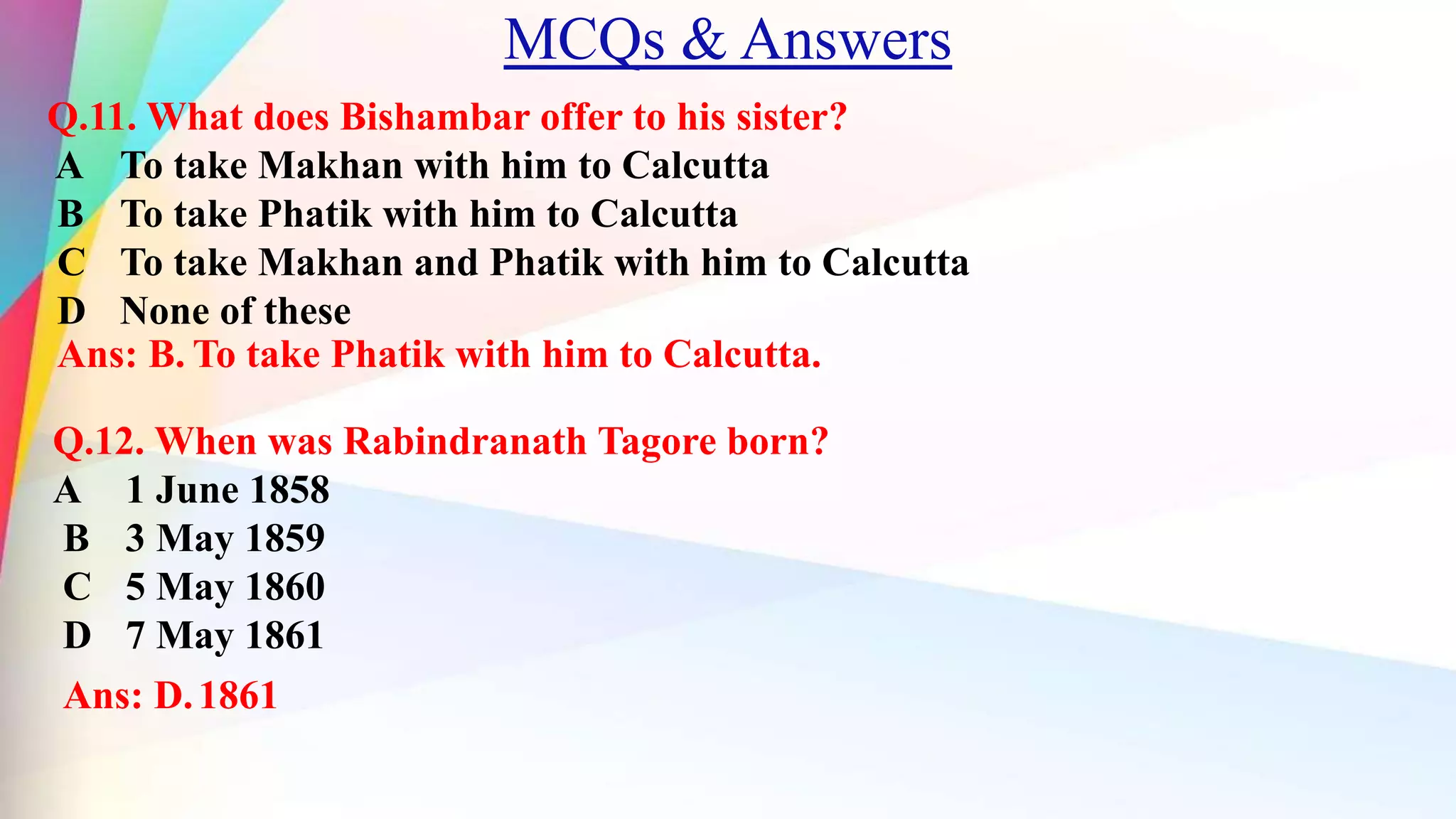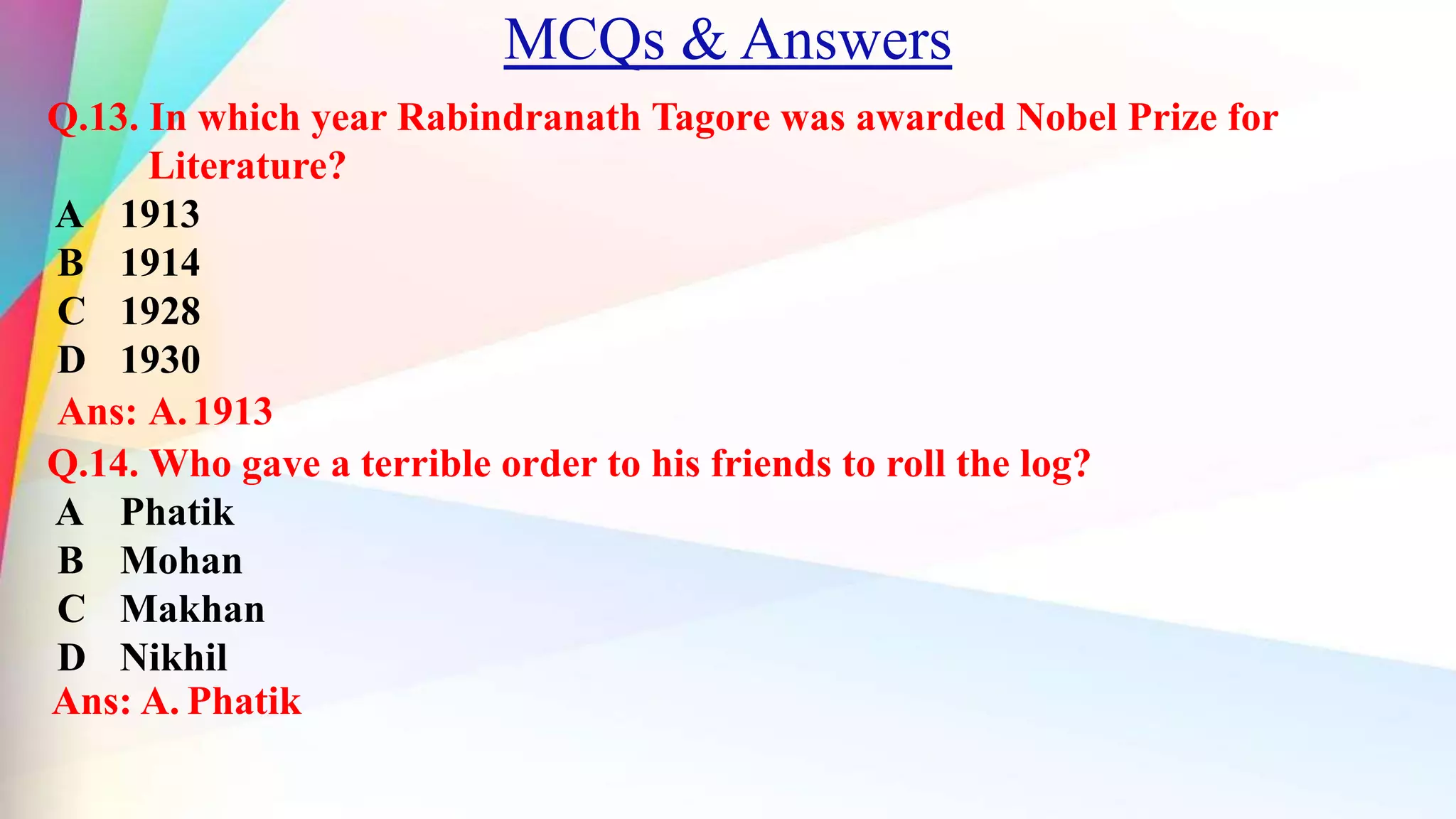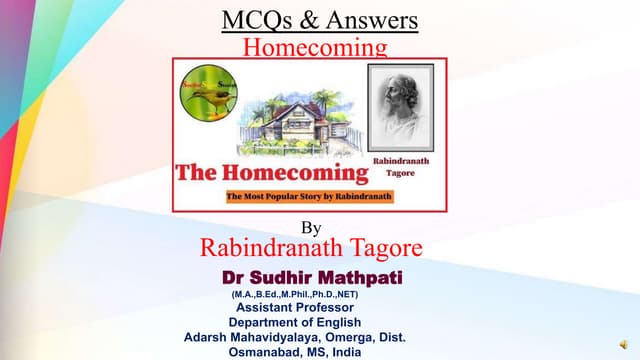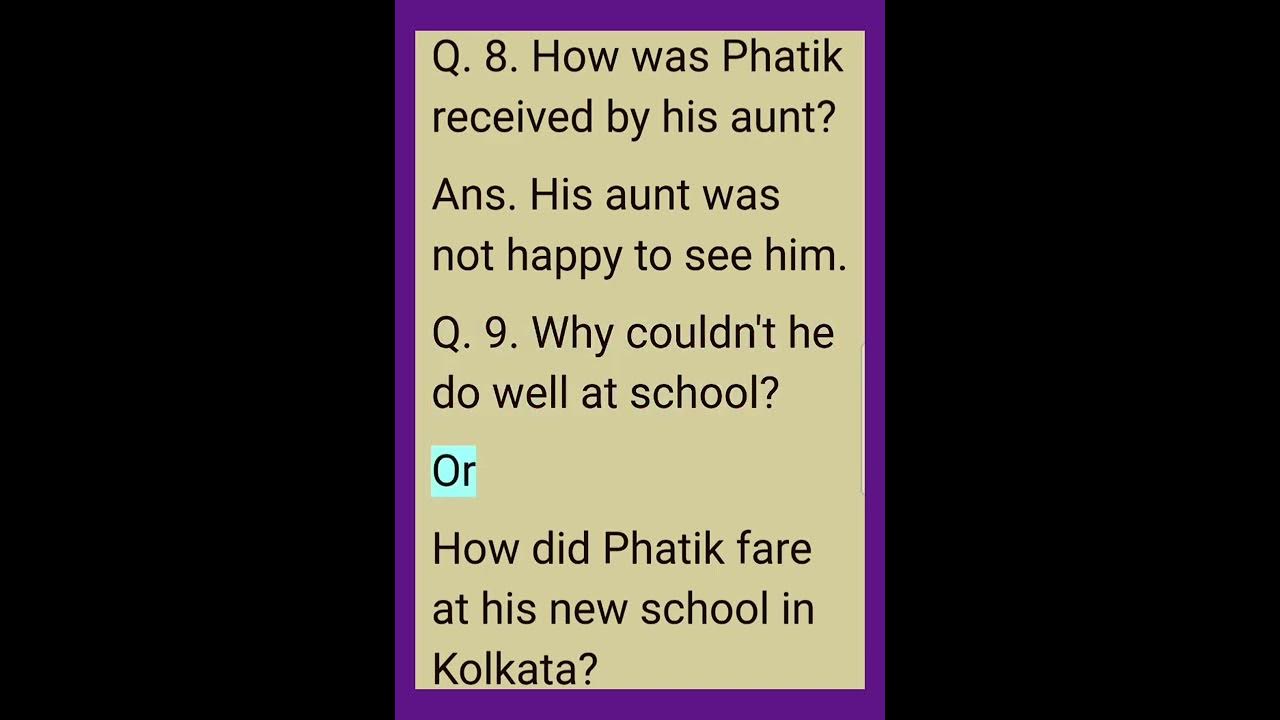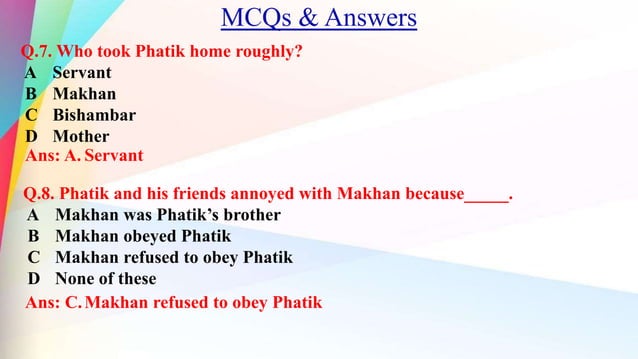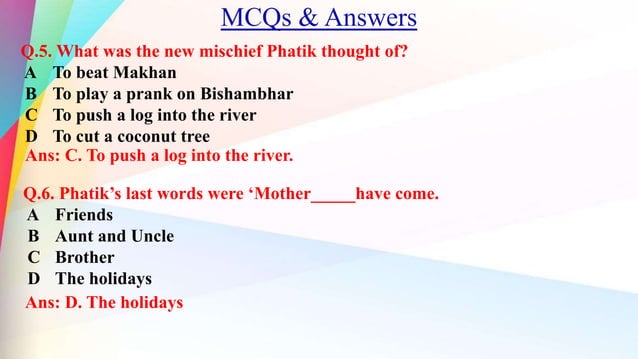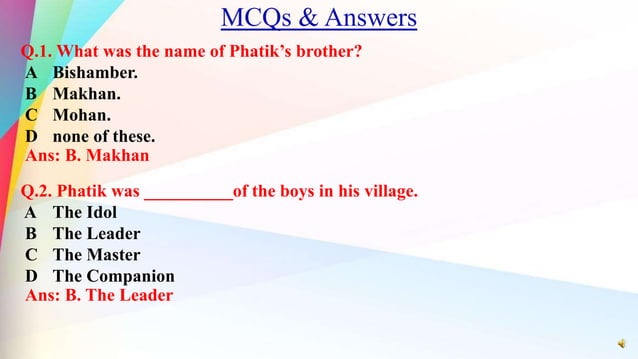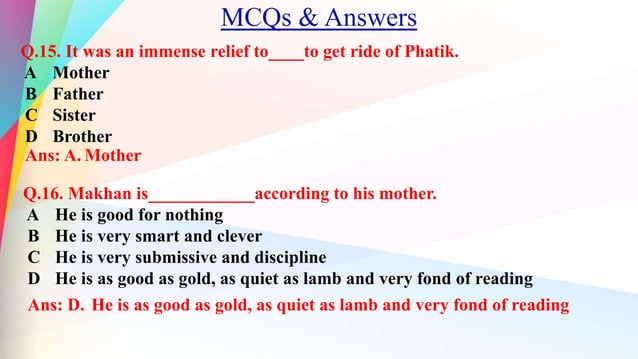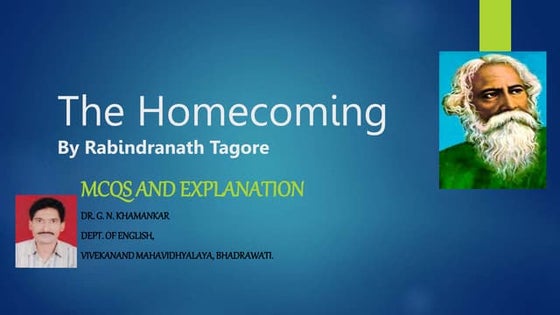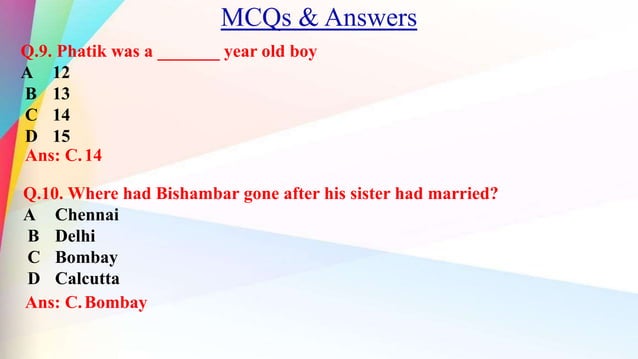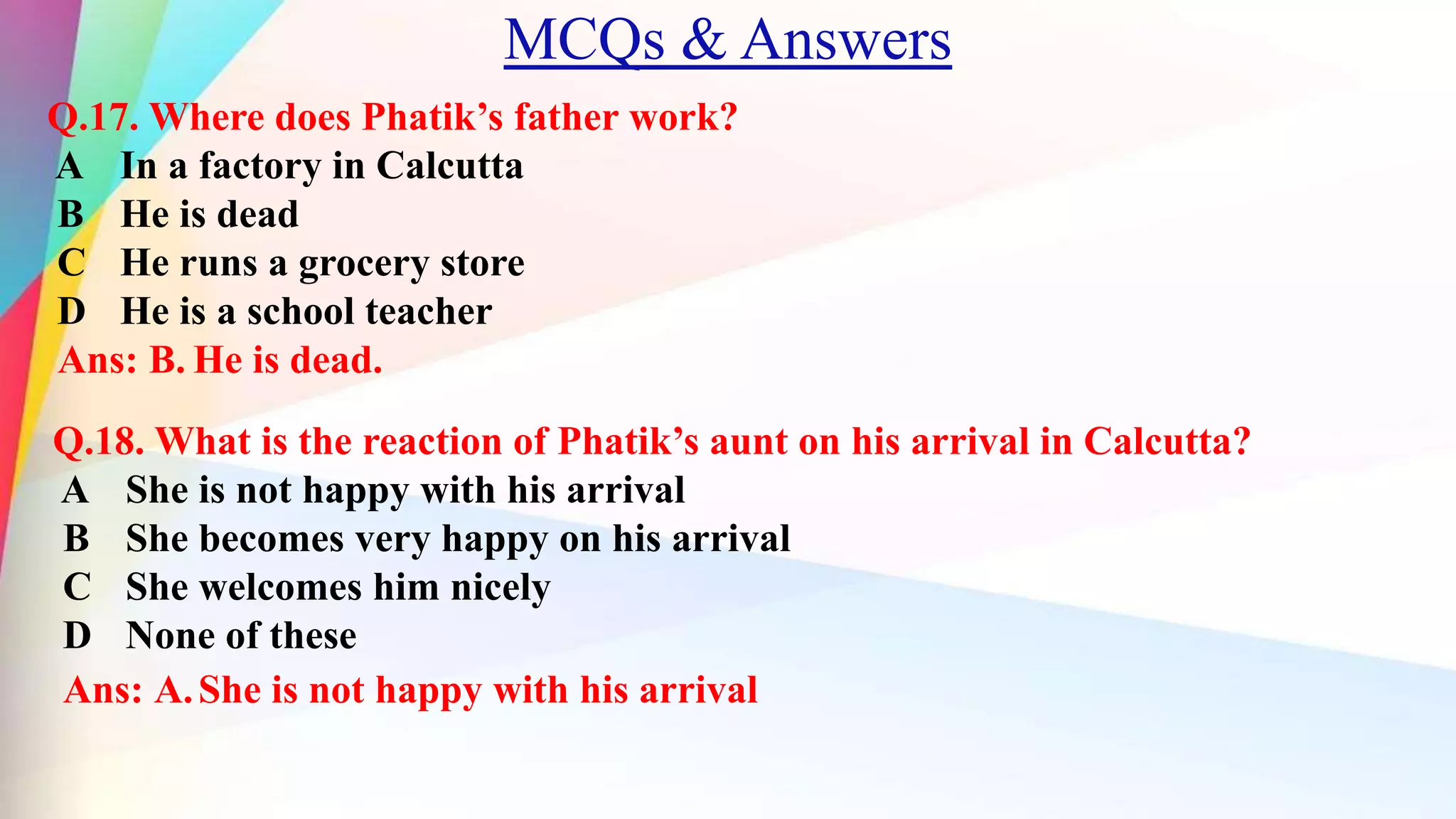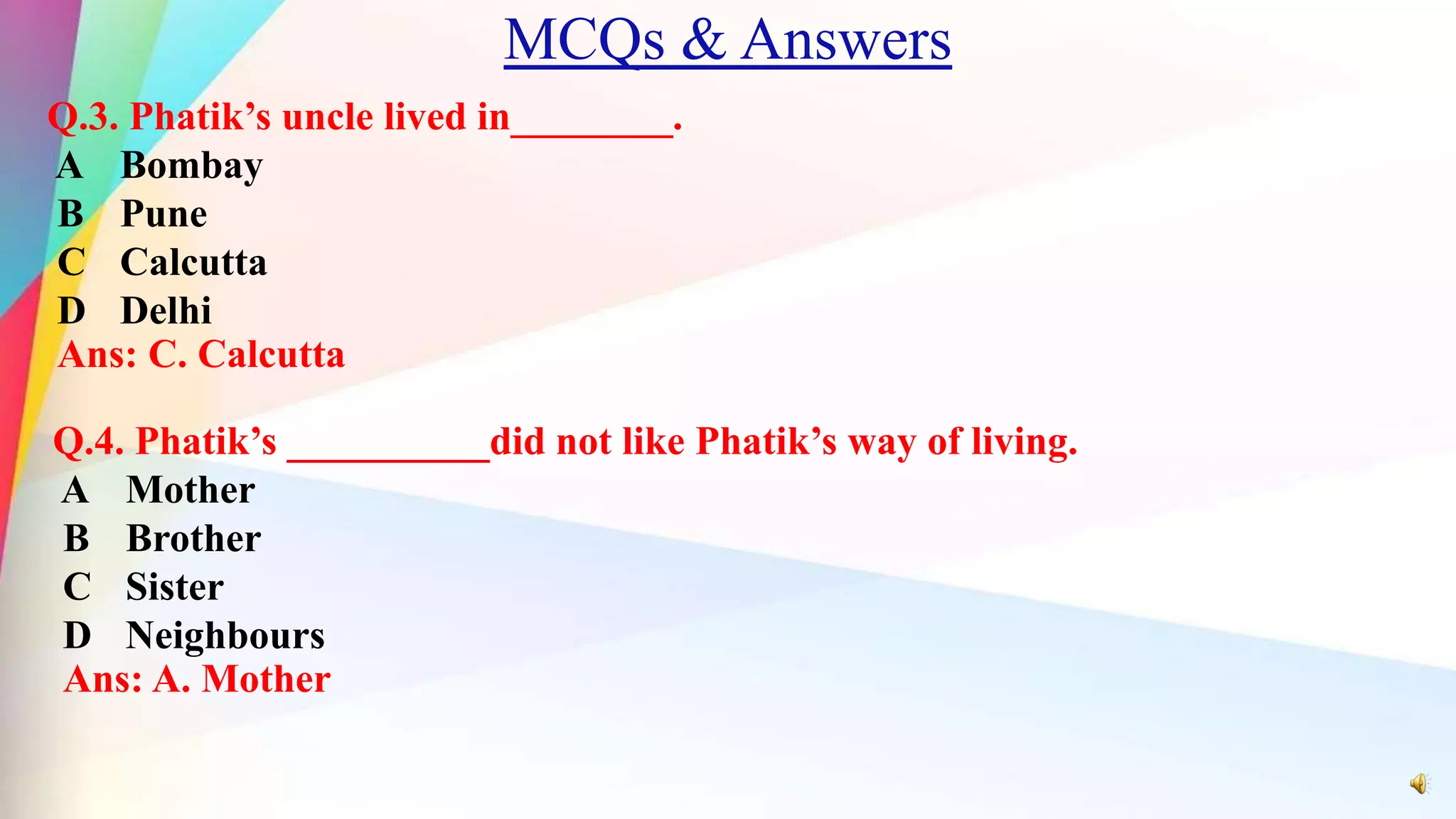Homecoming By Rabindranath Tagore Question Answers

The legacy of Rabindranath Tagore's short story, "Homecoming," continues to resonate within academic circles, particularly in the context of literary analysis and syllabus design. Recent discussions and critical explorations have focused on unpacking the complex themes and nuanced characters that make this story a staple in curricula across various educational levels.
At the heart of this renewed interest lies a persistent question: How do we effectively teach and understand the layered meaning of "Homecoming" in a way that honors its cultural context and literary significance? This article delves into the prevalent interpretations, explores the common questions that arise in classrooms, and examines the ongoing debates surrounding the story’s enduring relevance.
Understanding the Core Themes
"Homecoming" is fundamentally a tale of displacement, identity, and the yearning for belonging. The central character, Phatik Chakraborty, embodies the struggles of adaptation and the emotional toll of being uprooted from one's familiar environment.
Many discussions center around Phatik's character arc. His initial exuberance, followed by his gradual decline due to neglect and misunderstanding, forms the narrative's tragic core.
Common Questions and Interpretations
A frequently asked question concerns the motivations of Phatik’s uncle and aunt. Were they deliberately cruel, or simply unaware of the impact their actions had on the young boy?
Interpretations vary, with some critics arguing that the aunt's indifference reflects a societal bias towards sons over nephews. Others suggest that the uncle, while seemingly well-intentioned, lacked the emotional intelligence to understand Phatik's needs.
Another point of contention revolves around the story's ending. Phatik's final words, expressing his longing to return home, encapsulate the profound sense of alienation that permeates the narrative.
Analyzing Literary Devices
Tagore masterfully employs symbolism and imagery to convey the story's underlying themes. The recurring motif of 'home' represents not just a physical location but also a state of emotional security and acceptance.
The river, a powerful symbol in Bengali literature, serves as a metaphor for the flow of life and the passage of time. It highlights Phatik's inability to navigate the currents of his new reality.
Discussions often explore the effectiveness of Tagore's narrative style. His use of simple yet evocative language creates a deeply moving and relatable story.
The Story's Enduring Relevance
"Homecoming" remains relevant today because its themes of displacement and cultural adjustment continue to resonate with contemporary audiences. In an increasingly globalized world, many individuals experience the challenges of adapting to new environments and navigating unfamiliar social dynamics.
The story serves as a powerful reminder of the importance of empathy and understanding. It encourages readers to consider the emotional needs of those who may be struggling to find their place in the world.
Furthermore, "Homecoming" prompts critical reflection on issues of social responsibility and the impact of individual actions on others. It is frequently discussed alongside contemporary works that explore similar themes of identity and belonging.
Educational Implications
Educators are increasingly incorporating "Homecoming" into their curricula, not just for its literary merit, but also for its potential to foster critical thinking and empathy among students. The story provides a valuable opportunity to discuss complex social issues in a nuanced and engaging way.
Some educators use the story as a springboard for discussions about cultural sensitivity. They emphasize the importance of understanding and respecting different cultural perspectives.
Others focus on encouraging students to connect with Phatik's emotional journey. This helps them develop empathy and learn to appreciate the challenges faced by individuals who are displaced or marginalized.
The key questions being asked today are about adapting teaching methods. These new methods will encourage critical analysis and relate the story to the contemporary world.
Discussions around "Homecoming" are also increasingly incorporating postcolonial perspectives. This framework analyzes the power dynamics at play in the story and explores the lasting impact of colonialism on identity and culture.
By examining the story through a postcolonial lens, students can gain a deeper understanding of the complexities of cultural identity and the challenges of navigating a world shaped by historical inequalities.
Looking Ahead
The ongoing exploration of "Homecoming" promises to yield further insights into its enduring appeal and relevance. Future discussions will likely focus on applying new critical frameworks and exploring the story's connections to contemporary social issues.
Continued engagement with Tagore's masterpiece is essential for fostering a deeper understanding of human nature and the complexities of the human experience.
Ultimately, "Homecoming" serves as a timeless reminder of the importance of empathy, understanding, and the enduring human need for belonging, securing its place as a subject of continued study and reflection for generations to come.

